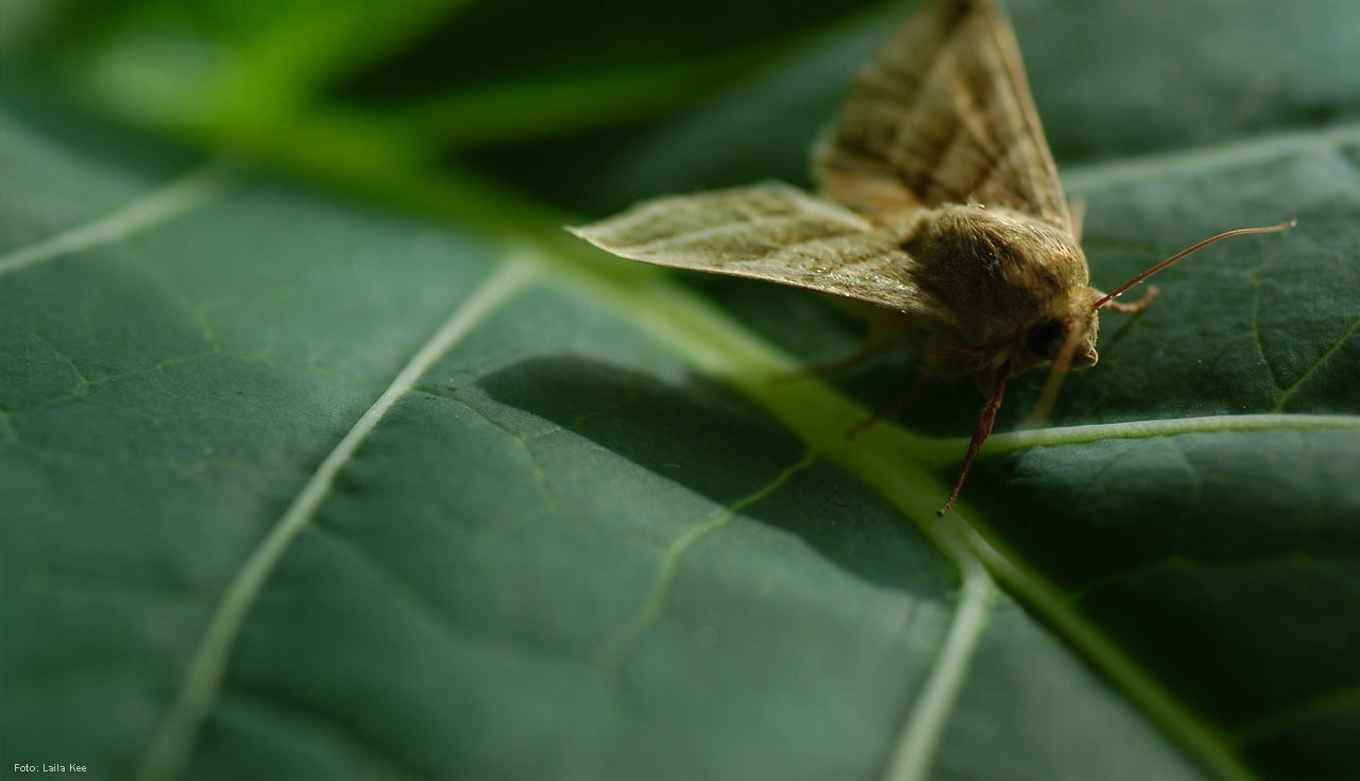Unattractive female moths can benefit from proximity to attractive ones
22 december 2017

The findings were published in Scientific Reports on Friday, 22 December. They shed light on strategies used by animals to better their chances of finding mates.
Who has the best chances of attracting a mate? 'The most attractive one, it is often assumed', explains first author Michiel van Wijk of the UvA's Institute for Biodiversity and Ecosystem Dynamics (IBED). 'But if that were the only factor, you would find less and less variation in attractiveness over time. The unattractive individuals would cease to exist. But generally speaking that is not what see: whether you're talking about birds, fish, moths or humans - all kinds of species include individuals with varying levels of attractiveness.'
Variation in sex pheromones
In insects, and moths in particular, attractiveness is mainly linked to scent: females emit a sex pheromone that attract males, sometimes from hundreds of metres away. Research on many populations of the noctuid moth Heliothis virescens showed that females are far more variable in their sex pheromone than was previously assumed. In the lab this variation was discovered to have a genetic basis: individuals could be selected to create attractive and unattractive lines. 'By testing females from these selection lines in the field we and our colleagues in the US found that the unattractive females never attract a mate when they are in the proximity of other unattractive females', last author Astrid Groot of IBED explains. 'But when in close proximity to an attractive female, her chances of attracting a mate are as good as those of an attractive female on her own. This indicates males sometimes make "mistakes" as they navigate to their target'.
The most unexpected finding was that attractive females also benefitted from proximity to unattractive females: they mated sooner than attractive females on their own or with another attractive female nearby. Van Wijk: 'These findings show the importance of the social environment. Unattractive females don't stand a chance on their own, but their odds are much better in the proximity of an attractive female. And attractive females become more attractive when there are unattractive females close by.'
Publication details
Michiel Van Wijk, Rik Lievers, Astrid Groot, Jeremy Heath and Coby Schal: ‘Proximity of signalers can maintain sexual signal variation under stabilizing selection’, in: Scientific Reports (22 December 2017). DOI: 10.1038/s41598-017-17327-9